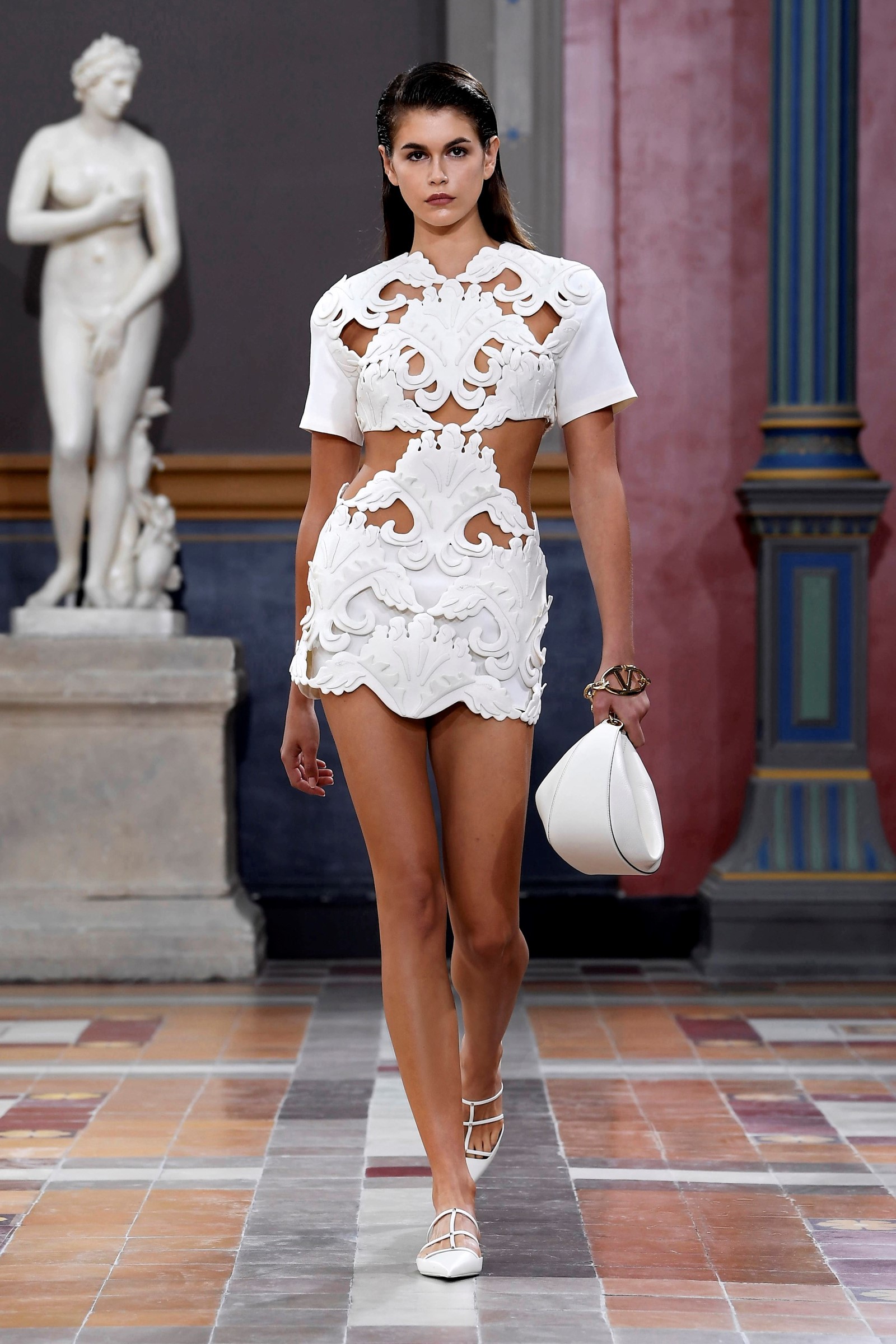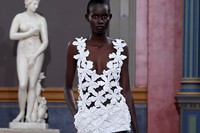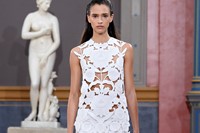Pierpaolo Piccioli was outraged and disgusted by the wave of violence against women that erupted in Italy this summer, and by the restrictive policies of Italy’s far-right leader Giorgia Meloni. So he decided, more than ever before, to anchor his Spring/Summer 2024 women’s ready-to-wear collection in his deep belief in the rights and agency of women. Of course, women are fundamental to Valentino – it is one of the most feminine of couture houses, whose roster of clients number some of the most famous and influential women of the past half century: crowned heads, Hollywood royalty, power-brokers. But this collection moved gracefully between Valentino’s heritage and our contemporary world.
At the centre of all was the body: a liberation of that, Piccioli said, was fundamental, and rather than concealing the body, he wanted to frame it, celebrate it. And, in turn, celebrate women’s freedom to reveal their body as they wish – not for the male gaze, but for their own enjoyment. At a preview, he even alighted on the notion of original sin – “Italy is a Catholic country, after all,” he shrugged. It’s not a reference many fashion designers dash out – although, frankly, the restrictions of religious doctrine devised thousands of years ago still shape our societal reaction to dress today.
Piccioli’s major idea in this collection – major in every sense of the term – was a technique he called Altorilievo, or high relief. It involves ‘sculpting’ fabric through skilful manipulation, stitching and embroidery until each piece resembles the three-dimensional curls of stucco that spiral across the storied walls of stately homes, or frame masterpieces. Here, they served to frame the human body, shaped into foliate and organic forms magically held around the exposed body. Harking back to Adam and Eve, they also reminded me of the fig leaves that prudish Victorians affixed to ancient statues to clothe their classical nakedness: when royalty visited the Victoria and Albert Museum, the cast of Michaelangelo’s David had a 40cm fig leaf hung over its crotch, suspended from a pair of savagely-screwed hooks, for the sake of decorum. By contrast, Piccioli’s Altorillevo dresses – while covering as much as one may wish – also glorified the skin, transforming it into a kind of fabric all its own and highlighting a unique rapport between body and garment. Or, rather, woman and garment – this was an innately, intensely female collection. Please also remember that the hands who stitched this – and the minds who figured out its mind-boggling technicality – are predominantly women, too. This is the closest Piccioli’s ready-to-wear has come to couture – and was all the more satisfying for it.
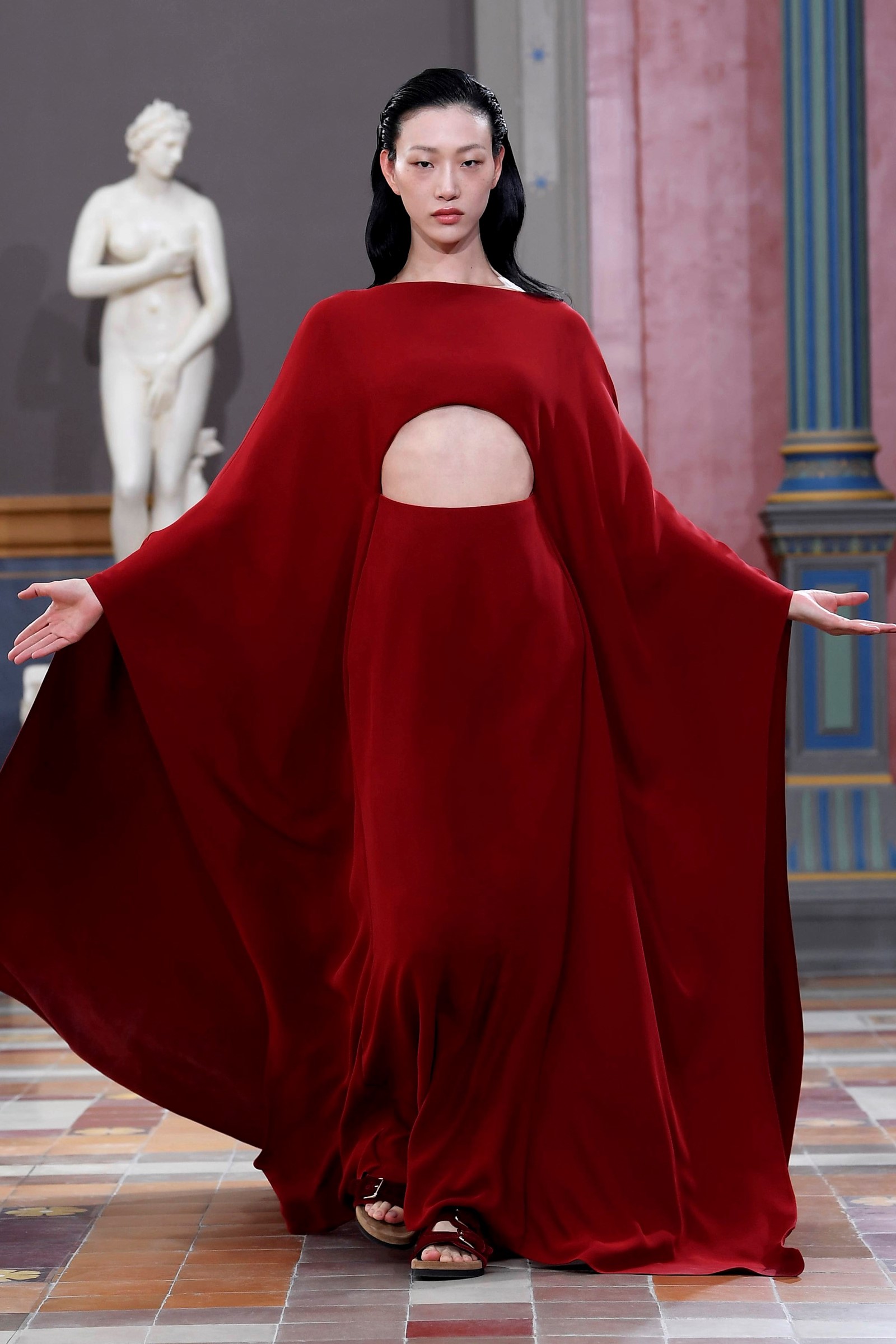
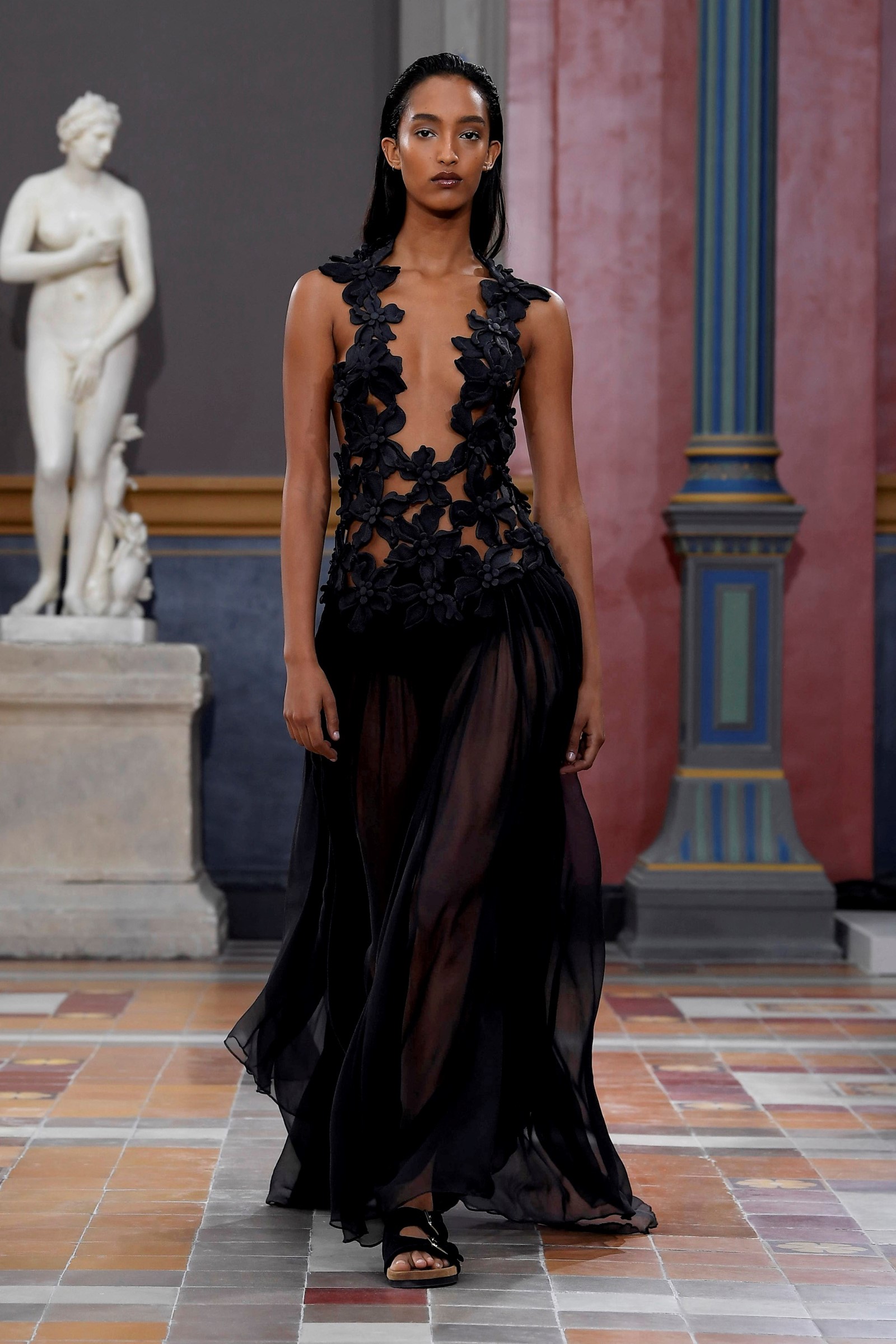
If a connection to classical statuary was highlighted by the show’s venue – the vast, vaulted main hall of Paris’ Ecole des Beaux-Arts, its perimeter studded with statues – the performance at the centre was all about the living, breathing body. Piccioli turned to long-term collaborator, the musician FKA twigs, to devise a performance piece of writhing female bodies. Twigs herself appeared to conduct them in a rhythmic, mesmerising movement using her own body, while the figures seemingly united to shift as one around the space. ‘Cours’ de ballet was given a whole new meaning. Microphones captured every crack and twist of bone – while sand, grit and stones were ground, scattered and shaped to create percussive accompaniment in a ‘Foley dance’ (related to the Foley artists who provide sound effects for movies).
The dance continued in the clothes themselves, between Valentino’s past and its present. The brevity of hemlines was reminiscent of the clothes of Valentino Garavani’s first decade, establishing his name with a bold and youthful take on couture. The pale tones, meanwhile, harked back to the Collezione Bianca show of 1968, a collection of breathtakingly intricate clothes executed entirely in snowy white. That, of course, didn’t have jeans in it – Piccioli did. And much of the collection was inspired by the white T-shirt, including a series of sinuous goddesses dresses draped easily around the body. They were statuesque, but not statue-esque. Indeed, nothing was in the collection that proved a supreme ode to the dynamic freedom of the body and mind. Feminist to the core.
